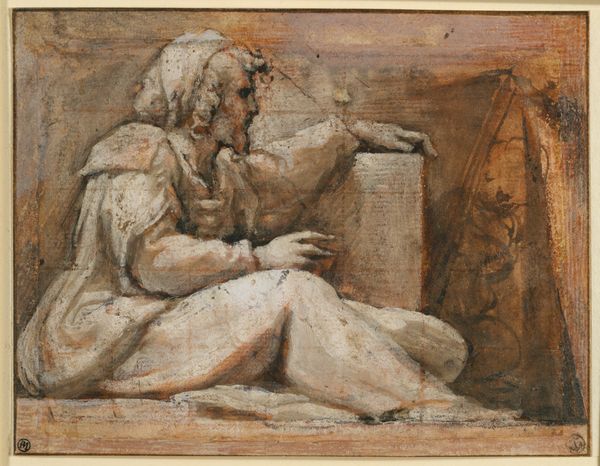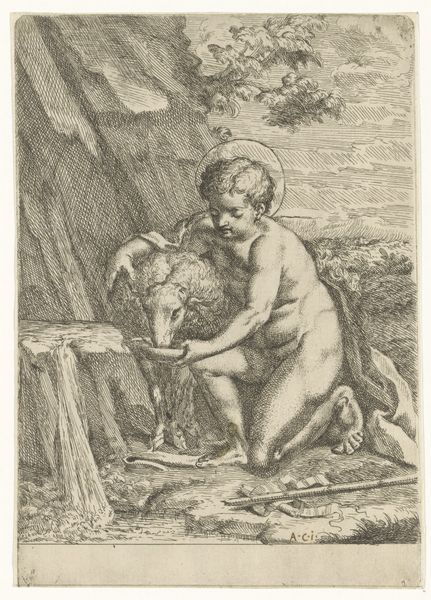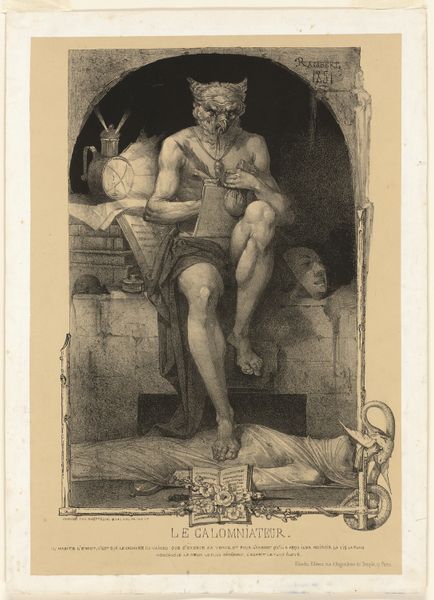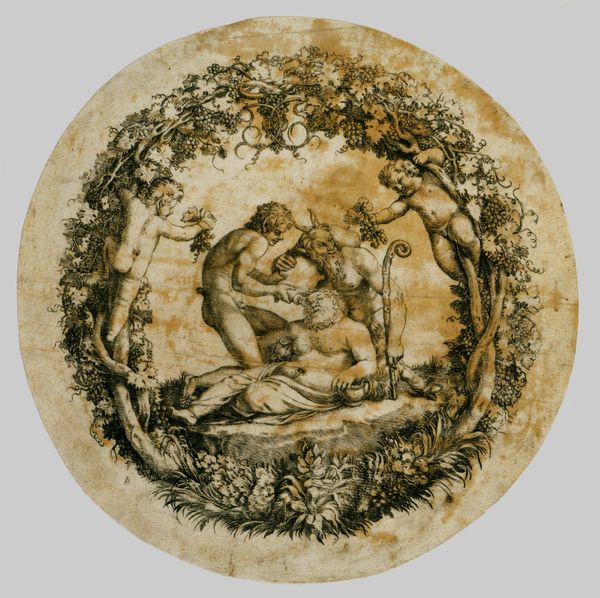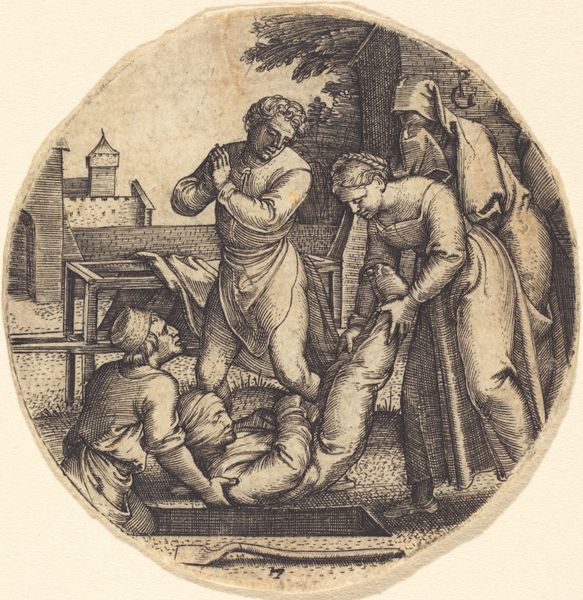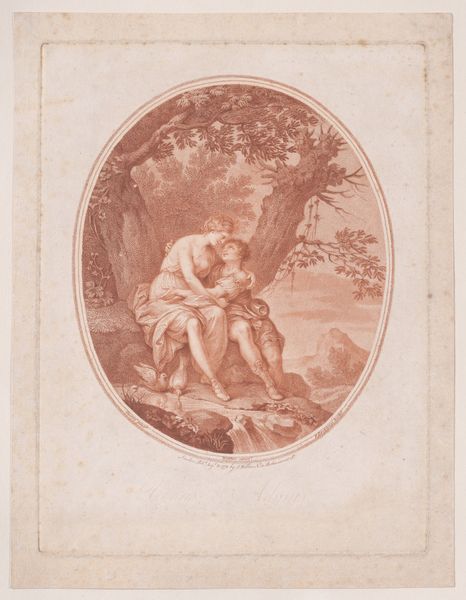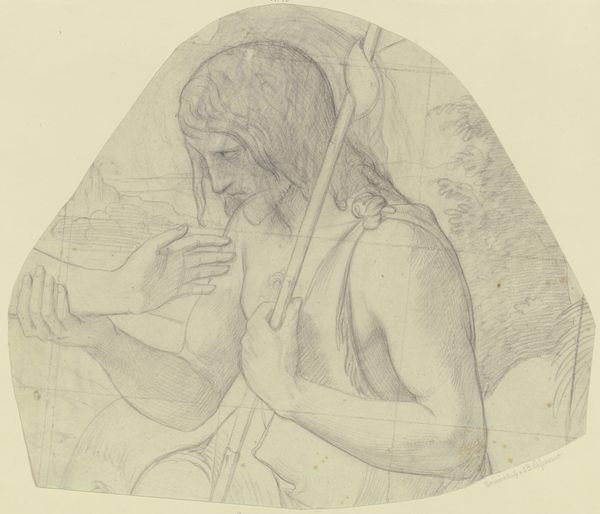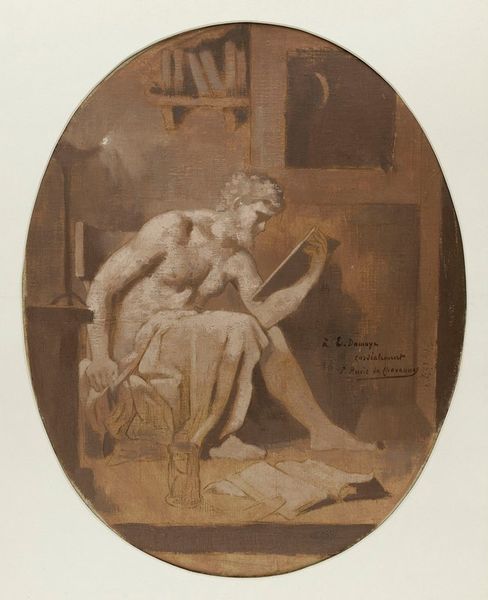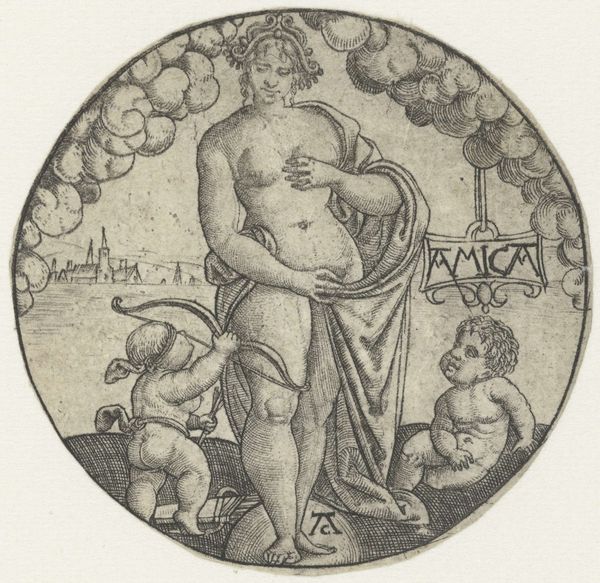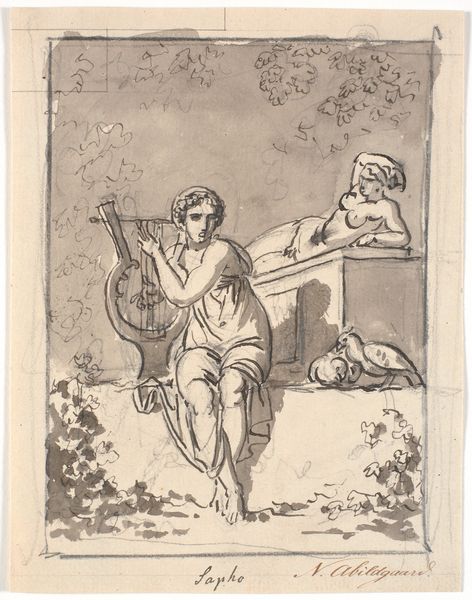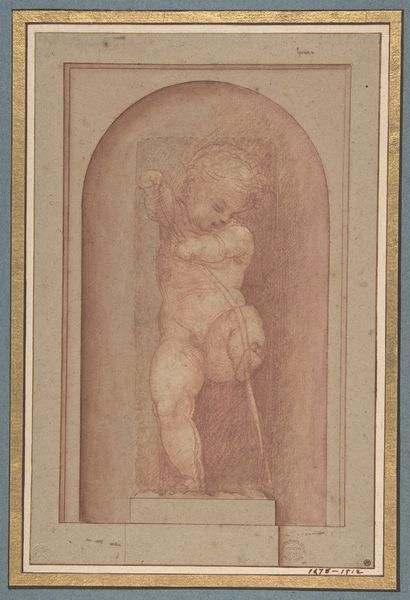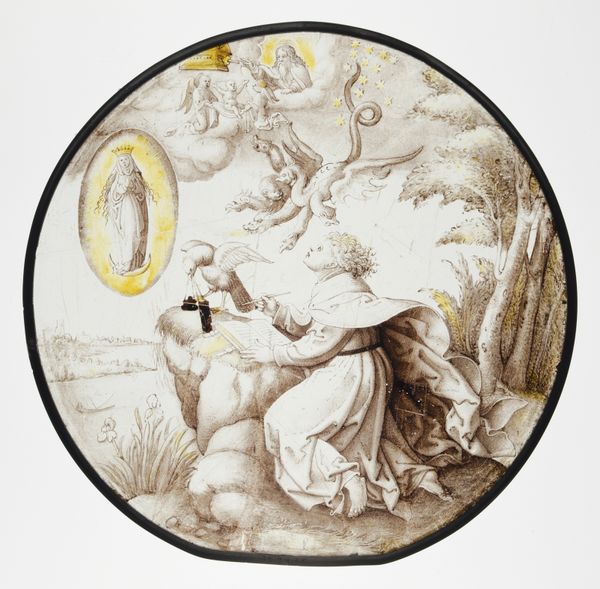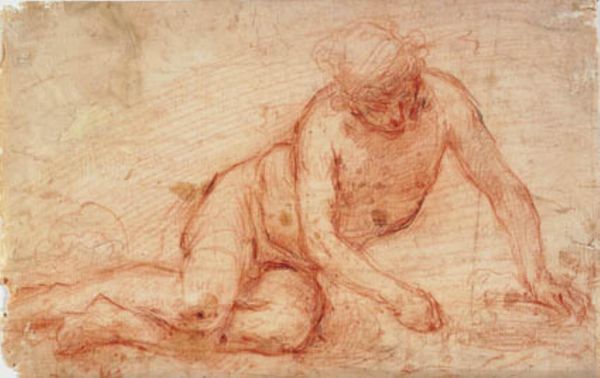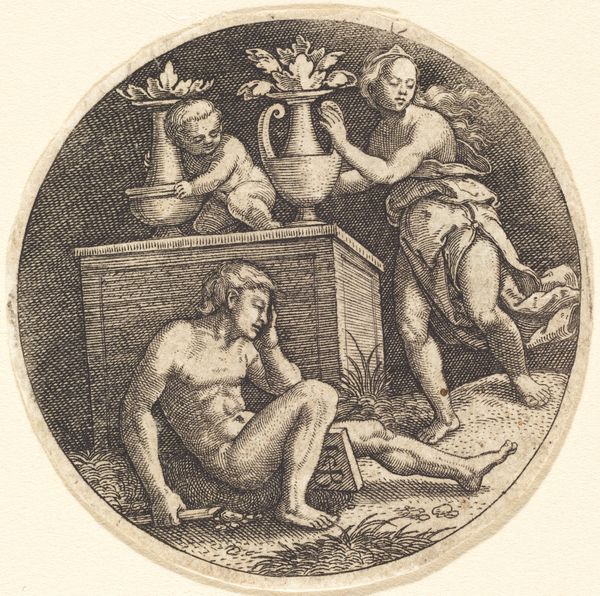
painting, oil-paint
#
painting
#
oil-paint
#
figuration
#
oil painting
#
child
#
genre-painting
#
italian-renaissance
#
nude
#
early-renaissance
Copyright: Public domain
Editor: Here we have "Putto and a Small Dog - back side of the Berlin Tondo," an oil painting by Masaccio, dated 1428. I find the figures quite endearing, almost sculptural. What strikes you most about this particular piece? Curator: Considering the Renaissance context, it's intriguing how this image, essentially the *back* of a devotional work, engages with the concept of private versus public art consumption. Think about the role that round format, or tondo, had in Florentine domestic settings and how this image would be intentionally shielded, known perhaps only to a select few. What might this suggest about Renaissance attitudes toward childhood and intimacy? Editor: That’s a really interesting point! So the hidden nature might be key. What can you tell me about that interplay between private devotion and public image-making at that time? Curator: Well, the period saw an increased patronage by wealthy families seeking to demonstrate their piety, and artistic savvy. The *Berlin Tondo*'s front would showcase a more conventional religious scene. Yet this reverse, with its glimpse of a classical putto, seemingly vulnerable, speaks volumes. Could it be interpreted as an understated commentary on childhood, separating this less seen imagery from more pious portrayals? Editor: It really highlights how social and even personal context impacts meaning! I never would have considered the reverse side being significant like that. Curator: Exactly! Thinking about the institutional journey, who commissioned this piece and what intentions were there can reveal how a Renaissance artwork has lived throughout time. What did you discover reflecting on this unique imagery? Editor: That hidden images can have powerful meanings as it creates more personalized content, compared to overt artistic intent of publicly displayed art. Curator: Indeed.
Comments
No comments
Be the first to comment and join the conversation on the ultimate creative platform.
